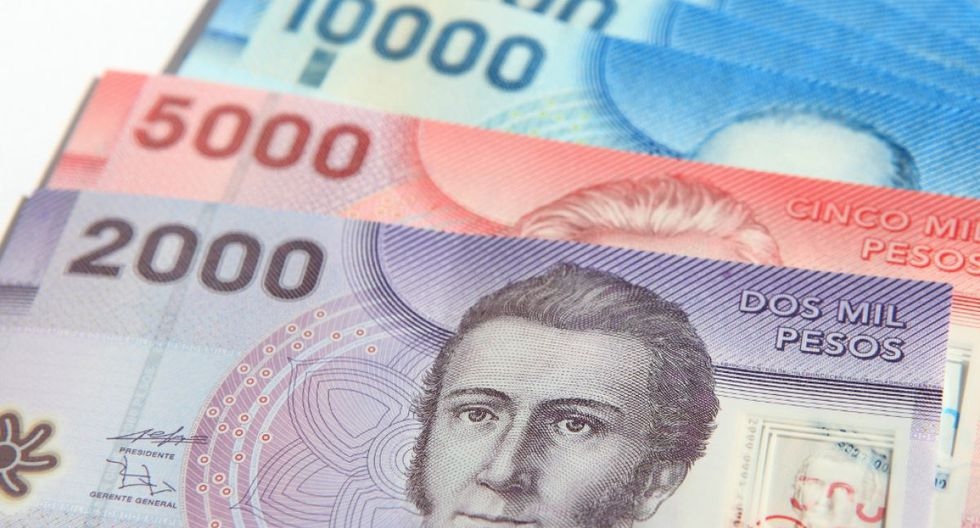RIO DE JANEIRO, BRAZIL – In August of this year, the minimum wage will reach CLP 400,000 (US$470) gross in Chile. It translates into a 14% increase from the current CLP 350,000. It was the agreement reached on Monday night by the government with the Central Unitaria de Trabajadores (CUT) and which must now be endorsed by Congress in the discussion to be held next week.
After the agreement, the government emphasized that this increase in the minimum wage was the most critical increase in 25 years, and, in addition, it has been six years since the CUT had reached an agreement with the government on this matter.
But the increase to CLP 400,000 broke that record and allowed the country to compare favorably with other countries in the region. Indeed, according to a report by the Economic Context Observatory of the Diego Portales University (UDP), which uses the latest available data and for comparative purposes considers the measure of dollars adjusted by purchasing power parity (PPP), the minimum wage in Chile will reach US$879 with the agreed increase, rising to the second place in Latin America, and being only surpassed by Costa Rica.

Thus, with the established increase, it will surpass Ecuador, which has a minimum wage of US$839. Much further behind are Brazil, with US$471; Mexico, with US$535; Uruguay, with US$632; Argentina, with US$660; and Colombia, with US$702.
Despite this upturn in the region, Chile’s minimum wage will still be far from the Organization for Economic Cooperation and Development (OECD) countries. Luxembourg leads the list with a minimum wage of US$2,529, followed by Ireland with US$2,376, and the Netherlands with US$2,332. The average minimum wage in the OECD is US$1,604.
The director of the Observatory of the Economic Context of the UDP, Juan Bravo, points out that “Chile leads among the largest economies in the region. However, it is not the leader of the entire region, since there are economies such as Costa Rica, where the comparable minimum wage is higher”.
Nevertheless, he states that “given that the essential foundation of the minimum wage is labor productivity, Chile is relatively well-positioned within Latin America because its labor productivity is also well positioned. Thus, the data show that economies with higher levels of economic development tend to have higher minimum wage levels because developed countries have higher labor productivity and can therefore pay higher wages.
For Bravo, the only sustainable way to raise the minimum wage in the medium term “is to raise the growth of labor productivity, so policies to that end are essential to raising wage levels, attacking the root of the problem, which is the lack of human capital components such as education and experience, which is concentrated in certain segments of the population”.
Currently, in Chile, 804,231 people are affected by the minimum wage, equivalent to 21.8%.
Economists, in general, say that it is vital to know the aid measures for SMEs to determine the magnitude of the impact on employment faced with the government’s agreement with the CUT. “It is necessary to wait for the measures that will be announced to lessen the impact on SMEs, which is where those who earn around the minimum wage are located,” says the director of the Center for Surveys and Longitudinal Studies of the UC, David Bravo.
While Bci’s chief economist, Francisca Pérez, comments that “the main risk I see at the moment is on the labor market, which is not 100% recovered from the pandemic, which could mean that its pre-crisis equilibrium will take longer to arrive”. And he stresses that “it is necessary that the aid mechanism for SMEs to be provided by the Government be efficient and flexible, to adapt quickly to possible contingencies, so that the negative impact on the labor market is as little as possible”.
He points out that the impact on inflation will also exist “since we are at a time of very high inflation, but we believe that it will be to a lesser extent because due to the recession, families will be focused on maintaining spending on the basic food basket and trying to save/not spend on services or goods that are not necessary”.
Josefina Henríquez, a researcher at Clapes-UC, indicates that “the two-round increase in the minimum wage and a possible subsidy to the real increase in the minimum wage for SMEs go in the right direction to prevent small companies from having to destroy jobs. Therefore, the increase in the minimum wage seems to be a rather fair measure given the current inflation and not presenting great employment risks”.
Henríquez ruled out that there could be a greater inflationary impact. “Currently, inflation increases have been mainly due to the increase in food and energy prices, factors that, in my opinion, will not be even more affected by the increase in the minimum wage. Given current inflation, I do not believe having a higher minimum wage will generate higher inflation. On the contrary, the government’s new measure takes care of the problem of inflation and people’s purchasing power.
With information from La Tercera

